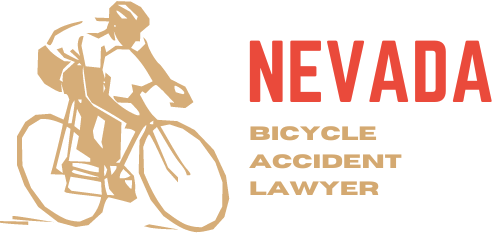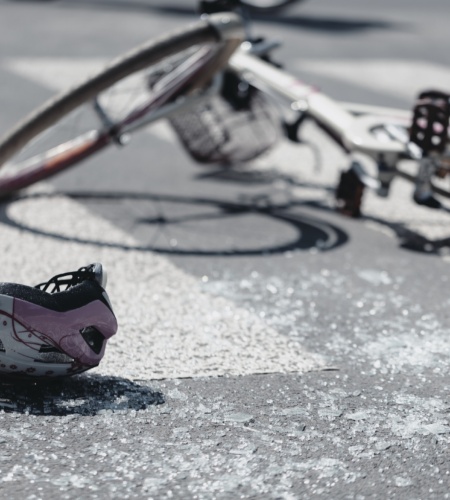What Percentage of Bicycle Accidents Result in Head Injuries in Nevada Prevention and Legal Guidance
Bicycle accidents can result in serious head injuries, yet specific statistics for head injuries resulting from bicycle crashes in Nevada are not readily available in the public domain.
Head injuries are a major concern for cyclists, as they can be life-altering.
Wearing a helmet is a key preventative measure against head injuries in the event of a bicycle crash. In Nevada, the law requires riders under the age of 18 to wear a helmet, although adult cyclists are not mandated by state law to do so.
Nevertheless, helmet use is strongly recommended for all cyclists regardless of age, as helmets have been associated with a significant reduction in head injuries.
If you’re involved in a bicycle crash and sustain a head injury, even if you were wearing a helmet, the injury can still occur.
Helmets greatly reduce the risk but don’t eliminate it entirely, as they are designed to absorb the impact and protect the skull and brain to a certain extent.
The effectiveness depends on the severity of the impact and the nature of the accident.
In the aftermath of a bicycle accident resulting in a head injury, you may need to consider hiring a personal injury attorney.
An attorney can guide you through the legal process, help you understand your rights, and represent your interests, especially if the accident was due to someone else’s negligence.
Seeking professional legal advice early on will assist you in navigating insurance claims and potential compensation, which can be crucial for covering medical expenses and other damages related to the injury.
Prevalence of Head Injuries in Bicycle Accidents in Nevada
Your safety is crucial when cycling in Nevada, where head injuries are a significant concern in bicycle accidents.
Statistics indicate that 60% of fatal bike accidents in this state involve head and brain trauma.
Such injuries range from concussions and contusions to more severe cases involving fractured bones or injuries to internal organs.
To put this into perspective, consider the impact of bicycle crashes across the United States. Nearly 597,000 bicycle-related traumatic brain injuries were treated in emergency departments, highlighting the risk you face when riding without adequate protection.
- Common Bicycle-Related Head Injuries Include:
- Concussions
- Contusions
- Fractured Skull/Bones
- Internal Organ Damage
In Nevada, your risk of incurring a head injury isn’t confined to traffic-heavy zones.
Although a proportion of bicycle accidents happen at intersections, you’re also vulnerable on open roads where higher speeds are common.
Staying alert and wearing a helmet is essential to lower your chances of sustaining a head injury.
You should be aware that:
- Fatalities mainly occur on roads away from intersections.
- Head injuries can happen even within demarcated bike lanes.
- The use of correct hand signals and adherence to road safety rules can mitigate some risks.
Prevention of Head Injuries in Bicycle Accidents
Making the right choices in equipment and riding practices significantly reduces your risk of head injuries when cycling.
Helmet Use and Safety
Proper helmet use is your first line of defense against head injuries.
Choose a helmet that meets the U.S. Consumer Product Safety Commission (CPSC) standards—this ensures it has been tested for safety effectiveness.
Your helmet should fit snugly, sitting level on your head and low on your forehead, with the straps forming a “V” under each ear.
Fasten the chin strap securely so that no more than two fingers fit between the strap and your chin.
Regularly inspect your helmet for wear and damage, and replace it after any crash in which it sustains an impact, or every 5 years, whichever comes first.
- Fit: Snug, level, and low on the forehead
- Fastening: Two-finger distance between the chin and the strap
- Inspection: Before every use for wear and damage
- Replacement: After any impact or every 5 years
Riding Practices and Environmental Factors
A safe riding style and awareness of the road play a critical role in preventing accidents and head injuries.
Always follow traffic laws, signal your turns, and remain alert to your surroundings.
Ride in bicycle lanes when available, and avoid busy roads and bad weather which increase the risk of accidents.
Be aware of road hazards, like potholes or loose gravel, that can cause a fall.
At night, make sure to have proper lighting on your bike and wear reflective clothing to improve your visibility to other road users.
- Road Awareness: Follow traffic laws, signal turns, utilize bike lanes
- Hazard Avoidance: Watch for potholes and loose gravel
- Visibility: Use lights and wear reflective clothing at night
Bicycle Helmets in Nevada
In Nevada, you should be aware that the helmet laws for bicyclists are relatively lenient compared to some states.
You are not legally required to wear a helmet while riding a non-electric bicycle.
Although, various safety campaigns and the Nevada Department of Transportation (NDOT) recommend the use of helmets for your protection.
Here are the specific details regarding different types of bicycles:
- Non-motorized Bicycles: You are not mandated by law to wear a helmet. However, it is highly recommended especially for children and in high-traffic areas.
- Electric Bikes (E-bikes): The law similarly does not require helmet use, aligning with the regulations for non-electric bikes.
- Mopeds & Motorcycles: For mopeds and motorcycles, there are separate helmet laws, and you are required to wear a helmet.
Should you decide to ride without a helmet, you should still consider the potential risks.
During a crash, wearing a helmet significantly reduces the chance of head injuries.
In the event of an accident, not wearing a helmet could potentially be considered negligence, which might affect personal injury claims.
To stay safe, especially if you are cycling in high traffic areas or during times of low visibility, voluntarily wearing a helmet is wise.
For electric bikes and mopeds, reviewing the specific regulations that apply to these vehicles is recommended, as they might differ from non-motorized bicycles.
Head Injury Risks with Helmet Use
When you ride a bicycle, your risk of a head injury in the event of a crash can be significant.
Using a helmet is one of the primary ways to protect yourself.
Research suggests that helmet use notably decreases the risk of head injuries.
Specifically, wearing a helmet can reduce the odds of a head injury by approximately 50% and serious head injuries by almost 70%.
However, even with a helmet, there is still a risk.
You can sustain a head injury in a bicycle crash if the impact is severe or if the helmet is improperly fitted.
It is crucial for your helmet to meet industry safety standards and be well-maintained. Additionally, it should be:
- Correctly sized: The helmet should fit snugly and not tilt back or forward.
- Properly worn: The straps must be securely fastened to prevent the helmet from falling off during a crash.
Nonetheless, helmets are not foolproof. A high-impact collision can still transmit forces that result in a concussion or other forms of traumatic brain injury (TBI).
Should you experience a head injury, even with a helmet, monitor for symptoms such as confusion, headache, or dizziness, as they may indicate a more serious condition.
In such cases, seeking medical attention promptly is essential.
Subsequently, if the accident was due to someone else’s negligence, consult with a personal injury attorney in Nevada to understand your legal rights and options.
They can help you navigate the potential for compensation for medical expenses, lost wages, and other damages resulting from the injury.
Legal Guidance After a Bicycle Crash in Nevada
After experiencing a bicycle crash in Nevada, knowing when to seek legal assistance and how to find the right personal injury attorney are critical steps in ensuring your rights are protected.
Scenarios to Consider Legal Help
You should consider seeking legal help in the following instances:
- If you have sustained a serious injury: A head injury after a bicycle crash may warrant legal advice due to the potential long-term effects and costs associated with medical care.
- Disputes regarding fault: When there is disagreement over who is responsible for the bicycle accident, legal expertise can help in determining and proving fault.
- Dealing with insurance companies: An attorney can negotiate with insurers on your behalf, especially if the settlement offered does not cover all your costs related to the accident.
Finding a Personal Injury Attorney
To find a personal injury attorney in Nevada:
- Research attorneys who specialize in bicycle accidents and have a successful track record in head injury cases.
- Look for reviews and testimonials about their services.
- Schedule consultations with a few lawyers to discuss your case. Many offer free initial consultations.
- Ask specific questions during the consultation, such as their experience with bicycle crash cases, their approach to dealing with insurance companies, and the potential outcomes of your case.
Select an attorney who demonstrates a clear understanding of Nevada’s bicycle laws and shows confidence in handling your case with the seriousness it deserves.



